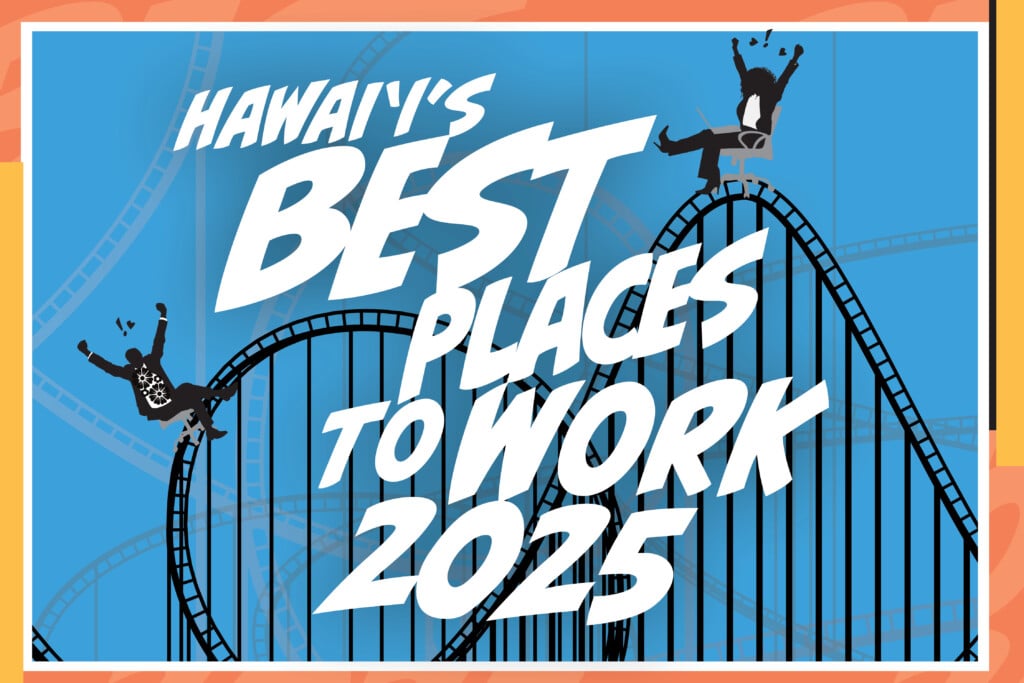Smokers Are A Drag

Study after study has concluded that smokers are less productive workers than nonsmokers – both because they take more sick days and because they’re less productive while at work. So it’s not surprising that many Hawaii companies have programs to help their smoking employees overcome their addiction.
The cost for companies to include a cessation program can be relatively small in comparison to employing smokers. Legacy, a nonprofit created by the 1999 settlement between the tobacco companies and 46 states, reported in 2006 that adding a smoking cessation program to a company’s health insurance typically increases the premiums for each employee by only $6 a year.
“Each employee or dependent who quits smoking reduces annual medical and life insurance costs by at least $210 almost immediately,” Legacy says.
Research published in the medical journal Tobacco Control in 2013 estimated that it costs companies $5,816 more a year to employ a smoker than a nonsmoker.
These cessation programs are also provided by caring businesses because smokers are unlikely to quit on their own. The American Cancer Society says only 4 to 7 percent of smokers who try to quit on their own and without medicine succeed for at least six months on any given attempt. The organization says studies published in medical journals have reported the success rate goes up to 25 percent with the use of medicine and even higher for smokers who use medicine and take advantage of counseling, behavioral therapy or other support systems. Hawaii’s companies and programs have proved and surpassed this average.
“Every time you quit, you’re getting closer to being tobacco free. You’ve shown success.”
-Valerie Smalley, Supervisor, Hawaii Tabaco Quitline
Kaiser Permanente has cessation programs in Hawaii for its employees and its members, and says its recent successes include Aqua Hotels and Hawaiian Airlines. In fact, Kaiser says its latest quit-success rate is 29.4 percent among all participating members.
Valerie Smalley, supervisor of government-funded agency Hawaii Tobacco Quitline, says its job is to assess and assist at every stage as smokers try to quit. “We are here to be a confidential location [where users] can check in with trained coaches. Our job as coaches is really to assess where they are. Have they ever done this before? What is their level of motivation?”
The Quitline is open 24/7 at 1-800-QUIT-NOW and at hawaiiquitline.org. The organization also provides text message support, free counseling, and help getting nicotine-replacement products such as patches. With a 34 percent success rate, the Quitline falls in line with the North American Quitline Consortium goal of 30 to 36 percent.
The American Lung Association in Hawaii helps a variety of people to quit, including the homeless, people in recovery for substance abuse, teens and pregnant women. With a grant through the Hawaii Community Foundation, ALA in Hawaii reaches between 300 and 600 people every year. Debbie Apolo, tobacco control manager at the ALA in Hawaii, says group therapy helps individuals express their experiences to a supportive group, and that listening to the struggles of others motivates those who are going smoke free.
Even if there are lapses, “Whenever you share your testimony, your statement is still beneficial,” she says. “It’s a journey. Every time you quit, you’re getting closer to being tobacco free. You’ve shown success.”
–
The Quitline
The Quitline provides text message support, free counseling, and help getting nicotine-replacement products such as patches.
PHONE: 1-800-QUIT-NOW
WEBSITE: hawaiiquitline.org






